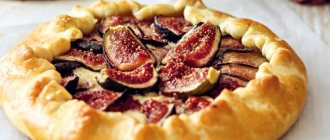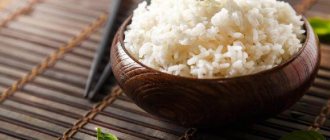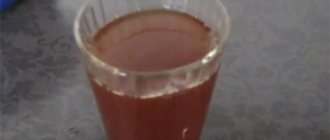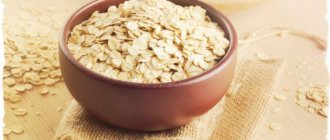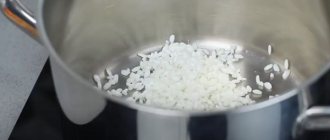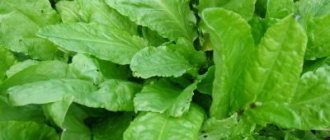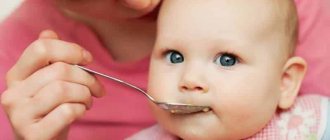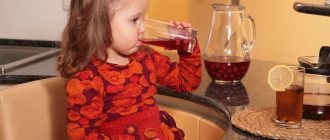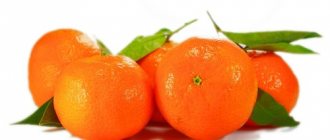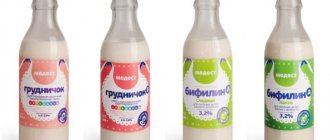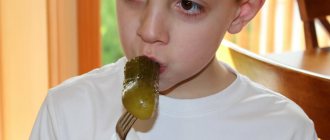Levchuk Victoria © One of the best summer vegetables is corn on the cob. Most adults and children love its sweet taste and it is an ideal side dish for most dishes. Boiled corn is a wonderful summer side dish for children.
Corn contains a lot of protein and carbohydrates, making it an excellent source of energy. However, it lacks many other nutrients. Corn is an excellent finger food, which is a good reason to offer it after 12 months to your baby.
What is corn?
Table of contents:
Corn is an annual plant of the Corn genus of the Cereals family. All corn on the cob is considered a vegetable. The corn kernel is considered a grain.
There are more than 200 different varieties of corn in the world. Plants range from 40 cm to 6 m in height, and the ears are 5 to 45 cm long with colorful kernels (yellow, blue or black). Corn is the only grain crop that depends on humans for its survival. Interesting fact: one hectare of corn produces 4 times more oxygen than a hectare of forest.
Harvest time depends on the intended use of the corn. The corn grain is harvested when its water content is between 25 and 35%. For example, for polenta and corn chips. For sweet corn, the water content ranges from 70% to 72%. Corn (or silage) is harvested when the entire plant contains 32 to 35% dry matter. For this type of harvest, the entire plant is crushed and stored before being sold as animal feed.
In addition to its use as a food product, corn is used in packaging (biodegradable plastics) and in pharmaceuticals and cosmetics (in the production of antibiotics, vitamins and vaccines). Ethanol produced from its fermentation and distillation is used to produce alcoholic beverages such as gin, as well as in the production of biofuels, providing an alternative to oil-derived gasoline.
corn verse
Corn - benefit or harm
The popularity of this cereal is easily explained by the combination of pleasant taste and undoubted benefits. One of the most valuable properties is that it does not accumulate the chemicals with which it is processed. This is a storehouse of useful elements, including:
- useful minerals (magnesium, potassium, sodium, calcium, fluorine, phosphorus, cobalt, copper, zinc, iron, iodine, etc.);
- vitamins of different groups (B, H, K, C, A, E, etc.);
- amino acids;
- starch;
- pectin;
- cellulose.
A distinctive feature of corn is the preservation of nutrients even after prolonged heat treatment - 85% of vitamins and minerals are retained. You can boil it, can it, make popcorn or baking flour from it - it is delicious in any form.
How many calories are in boiled corn?
It depends on its variety and additives during cooking. On average, this is 123 kcal per 100 g of grains, of which the main part is carbohydrates (about 22.5 g), optimal protein content (4.1 g) and low fat (2.3 g). Thanks to their composition, corn grains are quickly digested and satiate for a long time, without adding excess calories.
Nutritionists advise those who want to lose weight to include this cereal in their diet. In addition, the benefits of boiled corn have been proven for atherosclerosis, problems with the liver and kidneys, pressure surges, chronic fatigue, and gastrointestinal problems.
Types of corn
There are many types of corn (siliceous, starchy, waxy, chaffy, etc.). sugar varieties are eaten , but there are also popping varieties for popcorn.
minerals and vitamins corn
Sweet corn – has a milky color when young and bright yellow when ripe, with a sweet taste. The siliceous one is used for the production of cereals, and the starchy one is used for flour, molasses and alcohol, and the popping one is used for popcorn.
History of corn
Corn as we know it today would not have existed but for people to grow and develop it. It is a human invention, a plant that does not exist in nature. Corn can only survive if people plant it and protect it.
Scientists believe that people living in central Mexico created corn 7,000 years ago. The wild grass Teosinte gave rise to modern corn. From Mexico, corn spread north into the southwestern United States and south along the coast into Peru.
Native Americans taught European colonists how to cultivate corn, and since its introduction to Europe, corn has appeared throughout the world. It is grown in Canada and Russia, with a corn crop ripening almost every month of the year somewhere in the world. It is an important crop in Russia and a staple food product in the world, occupying the third leading place.
Corn Recipes for Kids
Corn porridge for little ones
- Corn grits - 2 tables. spoons;
- Water – 1 glass.
Rinse the cereal and place in a saucepan with thick walls and bottom. Pour in water and cook the porridge over low heat for half an hour. Grind the finished mixture in a blender or grind through a sieve. The result is a puree-like mass without grains or lumps.
Do not add salt, sugar and spices! For taste, you can add a little breast milk, formula, or vegetable oil. This dish can easily be given to a child up to one year old.
A one-year-old baby can already make porridge with milk. In addition, you can add raisins and dried apricots, prunes and other dried fruits, fresh fruits and berries, and chopped nuts to the recipe. This adds variety to the dish.
Vegetable stew
- Corn cob – 1 pc.;
- Carrots – 2 pcs.;
- Zucchini – 1 pc.;
- Onion – 1 pc.;
- Tomatoes – 3 pcs.;
- Salt to taste.
Cook the corn, separate the grains. Peel onions, carrots, zucchini. Cut vegetables into cubes. Dip the tomatoes in boiling water to remove the skin. Mash the tomatoes and add to the vegetables. Add water, vegetable oil, salt, corn and simmer until tender over low heat.
Baked corn
- Young corn cobs - 3 pieces;
- Butter – 30 grams;
- Garlic – 2 cloves;
- Salt – 1⁄2 teaspoon;
- Parchment and foil - 3 sheets each.
Peel the cobs and place on a sheet of parchment. Pass the garlic through a press and grate the corn. Grease the top with a piece of butter and salt. Wrap the cob in parchment and then in foil. Bake for half an hour at 200 degrees. The corn turns out juicy, aromatic and tasty. This unusual dish will appeal to both adults and children. But such corn is not recommended for a child under three years of age or a nursing mother.
The benefits of corn
Corn is a whole grain. Whole grains are the most nutritious type of grain. They contain vitamins, minerals and fiber. Corn contains much more vitamin A than other grains. It is also an excellent source of antioxidants.
Corn is also considered a starchy vegetable. It has less sugar, fat and sodium than other starchy vegetables.
Corn is high in B vitamins, fiber, iron, potassium and zinc—essential nutrients to support a child's growth. Sweet corn also contains phytochemicals that promote healthy vision and antioxidants to nourish the immune system. Finally, sweet corn is generally not genetically modified. As the name suggests, sweet corn contains natural sugars, but the grain is not as sweet as fruits and vegetables such as apples or beets.
About 100 grams of corn contains about 350 calories. If your child is underweight, a corn diet may help him gain a few grams. Even a normal weight baby can be given this vegetable to maintain his weight after breastfeeding has stopped completely.
Corn is rich in B complex. Thiamine supports nerves and brain development; niacin improves metabolism, especially sugars, proteins and fatty acids; and folate helps the development of new cells.
Corn contains phosphorus, potassium, magnesium and iron. Phosphorus supports bone health; Potassium and magnesium are essential for muscle and nerve function. Iron improves brain development.
The presence of antioxidants (via vitamin E) makes corn good for protecting cells from damage. It contains the phenolic compound ferulic acid, which is an anticarcinogenic agent. Antioxidants prevent tissue and DNA damage in the body.
The presence of fiber makes corn a good laxative. If your child has frequent problems with constipation, corn products such as corn kernels and corn flour may help relieve the problem.
Corn kernels are natural laxatives and can be used to relieve constipation. Cornmeal is also good, but it should be whole and not refined.
Yellow corn is rich in vitamin A, a source of beta-carotene, which improves vision. Beta-carotene, which is not part of vitamin A, acts as an antioxidant that is beneficial for baby's skin.
Boiled corn and corn porridge differ in the age of introduction into complementary foods. If a child is introduced to corn porridge from 8-9 months, then to boiled corn after 12 months. Some Russian sources claim that ideal acquaintance is no earlier than 1.5 years. Dr. Komarovsky suggests giving after 2 years. As usual, I’ll write that it’s up to the parents to decide. If a child digests food well (yes, look at the poop to see if there are any pieces of undigested food), is not susceptible to gas formation and gastrointestinal upset, he has teeth (they say at least 12 pieces) with which he will bite off corn kernels, he can deftly and Chews well and does not choke on food, then we can calmly give this product to the child during the corn season.
However, if your baby has problems digesting food, or he constantly choke on pieces, or he doesn’t bite well or chew well, then be patient while he learns these things, he’s simply not ready for corn. This approach should be applied to all new products. Evaluate several indicators of the child’s health and skills so as not to be surprised when the age of introducing a product into complementary feeding has approached, but the product does not suit the child.
Please note that if you have a good blender, you can give your child boiled corn in the form of puree after 12 months. Here the digestion of the product is assessed. If, after eating boiled corn, the child has increased gas formation, upset stool, or bloating, then the baby is not ready for the product, we suggest it for the next year.
We give boiled corn as a new complementary food only during the growing season. The frozen version is offered to the child if he became acquainted with corn in the summer. If the baby is familiar with corn porridge, then the first time we give more than 1 tsp of boiled corn, at our discretion, but not 100 grams. It takes at least 2-3 days to check the digestion reaction, so we start with a small portion and bring it up to normal.
Boiled corn is a difficult product for children to digest, so we give the child’s body a good job during the day and offer corn for lunch or an afternoon snack.
Canned corn is best offered after 3 years. True, I abandoned this product in favor of the frozen version. It’s not difficult to prepare it in the summer and then boil it for a salad in the winter, there are more benefits, and you don’t have to worry about salt, preservatives and whether my child can eat it.
Corn sticks, flakes and any products made from corn grits can be eaten almost immediately after the corn porridge is introduced. Just look at the composition and consistency of the product. Corn sticks can be eaten after 12 months, because their structure is porous, they stick to the teeth, despite the fact that they melt in the mouth, and they are also sprinkled with powdered sugar. Therefore, if we give a child corn sticks, then only a couple of pieces and take into account our opinion about sugar.
I would recommend corn flakes after 2 years, simply because of the hard consistency, as well as the huge amount of sugar. Although I take sugar-free corn flakes and add milk, sometimes you can give it for variety. I also don't use them for breakfast, it's a healthy snack with milk or water.
puffed corn to children after 7-10 years of age due to the spices in the product. But I buy organic popcorn, which comes with no additives, just the kernels. It can be given after 2-3 years, again depending on the digestion of food, in small quantities. Puffed corn complicates the gastrointestinal tract, so be careful.
I would also like to note that corn porridge, corn meal and boiled corn are much healthier than other corn food options, if only because the products are processed or spiced.
You can give corn 1-2 times a week, no more than 100 grams per meal. Corn is not a product that you can eat a lot. Even children, when eating the cob, usually gnaw it poorly, leaving an outer film. It is perfectly! We don’t touch them, they eat the healthiest things, leaving a film that is almost indigestible. For as long as I can remember, I also ate this way, but adults forced me to eat more carefully, like a mouse, so that there would be no leftovers. The standards are approximate, the child himself does not eat much, the product is filling and difficult to bite and chew.
Can raw corn I gave! It contains a lot of vitamin C, which is lost during heat treatment. Therefore, if the child really wants it, he is more than 1.5 years old, he has teeth, you are sure of the milkiness of the corn (it should be as young as possible), it is sweet and tasty, and also completely organic, then let him chew a little (no more than 30 grams ). The main thing is that the child does not suffer from chronic gastrointestinal diseases. This is my opinion, so I advise you to consult a pediatrician.
corn complementary food
Benefits and harms of the product
Corn kernels do not contain gluten. This is important for those suffering from plant protein intolerance. The cereal contains a lot of healthy fiber, vitamins B, E, K, D, carotene, starch, phosphorus, iodine, copper and calcium.
This product helps strengthen the health of bone tissue, immunity, vascular, hormonal and nervous systems, and supports general metabolism. In addition, it saturates well due to the large amount of “slow” carbohydrates.
Eating corn is recommended if you are prone to constipation, gallbladder dysfunction, frequent skin rashes, asthmatic symptoms, vision problems, and hypovitaminosis.
It is necessary to treat corn with caution in case of flatulence, diarrhea, inflammatory diseases of the stomach or intestines, pathologies of the hematopoietic organs, and carbohydrate metabolism disorders.
Tips for including corn in baby's complementary foods
- You should not give your child corn as his first food. Instead, you need to wait until he is introduced to other vegetables and fruits on the safe list.
- Corn can be yellow or white - both options are equally tasty. Newer, supersweet varieties tend to stay sweet longer because the sugar in the corn takes longer to convert to starch.
- For the best taste, cook and eat corn as soon as possible after purchasing it. Until then, store in the refrigerator, as this prevents the sugars from turning into starch too quickly.
- Canned corn contains less nutritious protein than fresh corn. If you decide to give your child canned corn, read the labels carefully and avoid brands that contain sugar or salt.
- For the first time, fresh corn can be given as a baby puree, which is easier to digest. This can be done at home by using a blender to puree the grains along with enough water to achieve the desired consistency.
- Until the child is one year old and has learned to chew food well, do not give him whole grains. They may pose a choking hazard.
Boiled corn in medicine
The substances contained in boiled corn help strengthen blood vessels and heart muscle. A unique set of microelements and vitamins helps keep the body in good shape. But in case of some diseases, boiled corn will have to be abandoned.
For diabetes
Although corn is considered a low-calorie product, it is strictly prohibited for this disease. We are talking not only about boiled, but also about canned corn and even corn flakes, since they can negatively affect blood sugar levels. The glycemic index of cooked grains is 70. This is even higher than canned corn!
For pancreatitis
During the acute stage of the disease, it is not recommended to consume boiled corn, since it requires a lot of enzymes for digestion, and this creates additional stress on the pancreas.
As for the remission stage, it is not recommended to consume boiled corn even then. Unless we are talking about a very small amount of grains - up to 100 g and no more than twice a week. Moreover, the corn should be well boiled to minimize the load on the pancreas.
For gastritis
In the acute stage of this disease, a special diet is prescribed - in fact, it is therapeutic fasting, and boiled corn is not included in the diet at this time. It can only be used in a state of remission. And at the same time, it is better to choose young cobs, since they are easier to digest and do not create additional stress on the gastrointestinal tract.
For the intestines
Even in an adult, corn takes a long time to digest in the body. This creates additional stress on the intestines, therefore, in case of inflammatory diseases of this organ in the acute stage, it is not recommended to use this product. But corn has a beneficial effect on a healthy intestine.
For constipation
The grains of this cereal contain large amounts of fiber. This component helps cope with constipation. You just need to regularly include boiled corn in your menu.
For gout
Substances contained in cereal grains help normalize salt metabolism. That is why boiled corn is recommended for gout. You just need to choose young cobs, they are not only tastier, but also cook faster, and the beneficial substances from them are better absorbed. Only if you have gout, you should not eat boiled corn with salt, as many people like to do. It is better to eat it with a small piece of quality butter.
For the liver
Many people believe that only boiled corn silk (hair) is beneficial for the liver. Indeed, their use facilitates the course of hepatitis and has a positive effect on the functioning of the liver and gall bladder. But boiled corn also has these properties. It should only be consumed in moderation.
For hemorrhoids
With this disease, it is very important to normalize the digestive processes to prevent constipation. To do this, you need to establish proper nutrition, including including boiled corn in your diet, which contains a large amount of fiber.
In addition, its grains contain substances that help strengthen blood vessels, and this is also very important for hemorrhoids.
For cholecystitis
Corn is believed to be beneficial for cholecystitis. Moreover, even in cases where it is accompanied by the formation of stones. But we are only talking about young ears of corn. They are boiled and eaten, but they do not throw away the broth, but drink a glass a day.
We recommend reading:
Allergies and corn
corn complementary foods
Allergy to corn is rare. The allergy is caused by proteins present in grains. Lipid transfer protein (LTP) is a major cause of allergies because it remains even after corn is processed or heated and after digestion. Other potential allergens include storage proteins and corn pollen present in the kernel. Some people with fruit allergies (especially peaches) may also be allergic to corn. As with any new food, start by offering a small amount of corn.
Corn allergy symptoms are common to any allergy, including runny nose, nausea, vomiting, upset stomach, diarrhea, skin rash, sneezing, headaches, asthma and anaphylaxis.
The first obvious way to combat a corn allergy is to avoid corn and corn-derived products. Give your child home-cooked food because ready-to-eat food may contain corn in any form. If the reaction is severe, consult a doctor.
Benefit
The rich composition of corn grits determines its beneficial effect on the child’s body.
Corn porridge is not only filling and tasty, but also healthy.
The impact of cereal nutrients is multifaceted:
Pyridoxine (vitamin B6) takes part in the metabolic processes of proteins and fats, ensuring the functions of the central nervous system, maintaining the body's immune defense, promotes the formation of red blood cells, and normal heart function. Eating corn porridge promotes the normal development of the nervous system, prevents the development of neurological diseases, helps cope with depression, and improves sleep. Vitamin H is necessary for the synthesis of fats and the conversion of glucose into glycogen. Phosphorus is involved in metabolic processes and ensuring acid-base balance in the body. It is necessary for the synthesis of brain phospholipids and nucleic acids, ensuring the mineralization of bone tissue and tooth enamel. With a lack of phosphorus in the body, a child develops rickets and anemia. Vitamin B2 (riboflavin), biotin, zinc ensure healthy skin and nails, and hair growth. The antioxidant properties of vitamins E and A help tissue cells get rid of radionuclides and toxic substances. The product's fiber normalizes intestinal function and cleanses it of toxins. Eating corn porridge reduces the likelihood of fermentation and putrefactive processes
This reduces the likelihood of flatulence (bloating) and painful colic in babies, and makes bowel movements easier. Potassium, magnesium, pyridoxine ensure normal functioning of the cardiovascular system and correct heartbeat rhythm. Activation of metabolic processes, normalization of fat metabolism, and the cleansing functions of porridge lead to the removal of excess fat, prevent the development of obesity, and normalize cholesterol levels. Corn porridge is an excellent source of energy, has a general strengthening and immunostimulating effect, and helps recovery after illness. The quickly arising feeling of satiety when eating porridge prevents overeating, which is important for children with excess body weight.
The valuable properties of corn porridge make it possible to use it in the diet of children of all ages, including infants. The rich composition and easy digestibility of porridge make it possible not only to diversify a child’s menu, but also to improve his health.
In what form should I give corn to children?
The first time a child gets acquainted with corn is in the form of porridge. Corn porridge is introduced into a baby's complementary foods at about 8-9 months, or more precisely after buckwheat and rice. The porridge should have a homogeneous liquid consistency, so for the first time it is prepared from corn flour or semolina, we look at the child’s chewing ability.
Closer to 12 months, you can introduce your baby to boiled corn. For the first acquaintance, you can prepare baby puree from corn kernels, or you can simply offer an ear of corn, where the kernels are cut in half. It is better not to offer grains separately from the cob, as there is a higher risk of choking. When a child takes a bite from the cob, he controls the size of the bite, and the grains are smaller, without a dense film, which reduces the risk of suffocation. Children almost always like corn because it is sweet, tasty, and has an unusual shape. Please only serve the product slightly warm, and not scalding hot, straight from the pan, otherwise the love will end before it even begins.
At what age can you feed your baby corn?
Children love sweet, juicy and brightly colored corn. In order for it to bring benefits, it is necessary to consistently introduce it into the baby’s diet.
Parents are wondering at what age a child can eat corn. And also how to choose a good product and what are the contraindications to its use.
The benefits and harms of corn
Corn can be both beneficial and harmful.
- Its benefit is that it quickly saturates the body, as it contains simple carbohydrates: fructose and sucrose. They can energize and improve brain function;
- The B vitamin contained in corn forms the child’s skeleton and muscles, strengthens the psyche and mental development;
- Thanks to calcium and phosphorus in its composition, this product strengthens the child’s bones and joints;
- Corn's low-calorie fiber content reduces cholesterol levels;
- Corn does not contain gluten, which causes allergies in some children.
- In addition, this product strengthens the immune system and takes part in the fight against viruses and bacteria;
- Corn grains are very dense, this prevents harmful substances from the outside from penetrating inside;
- And another important advantage of corn is that it retains its beneficial properties when cooked. Therefore, there is no need to doubt whether a child can eat corn.
Important! If, after consuming such a product, a rash does appear, it must be urgently removed from the child’s diet.
Contraindications to consuming corn are also ulcers, high blood clotting and indigestion. In the body of a child under two years old there are still few enzymes that digest it. This can cause abdominal pain, high gas formation and bowel dysfunction in the child.
Varieties of corn
Corn is consumed in many forms:
- boiled;
- raw;
- canned;
- air;
- corn sticks;
- in the form of porridge.
- You often ask me when can a child eat boiled corn?
- It is important that the child is able to chew hard pieces well - the answer to this question will depend on this, and the age of different children will be different.
- By the way, a useful article on this topic: How to teach a child to chew?>>>
- On average, the optimal age is 2 years.
How to select and store corn
Choose sweet corn with bright green leaves and pale stigmas . The corn should be bright , plump and free of dents and rot . Before buying, please open the corn leaves to look at the grains and the tip, which most often begins to deteriorate. You should not get rid of the leaves; they protect the product from drying out. After purchasing corn, it is better to use it immediately; the longer it sits without refrigeration and leaves, the faster it dries. Corn is best eaten within two days. Store it in an airtight container and in the refrigerator. Corn should be stored away from sunlight or heat because the sugars in the kernels easily turn into starch.
If you are not allowed to peel the leaves from the corn, then press the corn with your hands to feel its hardness. Firm corn is fresh and has healthy kernels.
It’s important, there was a separate article about corn porridge, I won’t repeat it.
Boiled corn can be stored for 24 hours in the refrigerator and reheated before serving. I don’t see any point in storing it any longer, it loses its taste and aroma. It is always best served freshly cooked.
What are corn sticks made from?
Corn kernels and salt are used to make corn sticks. Corn is good for children and adults. It contains important vitamins and minerals, strengthens the immune system and saturates with energy, restores strength and gives vigor. Corn grains remove bile and cleanse the body, improving digestion.
However, during the mechanical production process and after heat treatment, they lose the beneficial properties of corn and most of their natural composition. The result is an extruded, refined product with sticky starch and no taste. In addition, today technology and sanitary standards are often violated and cheap raw materials are used. This further deteriorates the quality and properties of corn sticks.
To improve taste, flavored additives and dyes, warm vegetable oil, powdered sugar, sucrose and various chemicals are added to the product. The sticks are tasty, but very high in calories and harmful. They are difficult to digest and digest, which disrupts digestion, causes bloating and increased gas formation, and constipation in infants.
The content of flavored additives and dyes provokes food allergies in the child. High calorie content and nutritional value lead to excess weight. The corn product contains fast carbohydrates, which instantly saturate the body and restore strength. But it also raises your blood sugar levels.
Nitrates, pesticides and corn
Corn does not accumulate nitrates on the cobs, and when harvesting it from the fields one should be wary of pesticides. Corn grown in fields is often treated with herbicides over the summer. It is believed that a month should pass after the last treatment, then this chemical is not dangerous to human life. This is why it is so dangerous to buy or pick corn from the fields. No one can guarantee that the corn is chemical-free, since it could have been processed yesterday.
To protect ourselves, we always buy corn with green and juicy leaves that do not have dark spots. It is better not to take without leaves. It’s also worth smelling the corn; it shouldn’t smell like chemicals. Also, if after cooking the product also smells of chemicals, it is better to throw it away. At best, the body simply gets rid of chemicals; this happens through diarrhea.
Additional recommendations
For cooking, children should select only undamaged corn, without dark spots or dried out kernels. The covering leaves on the cobs should fit tightly, be fresh and green. Before cooking, the product should be washed with running water, then soaked for 20–30 minutes to remove the slightest particles of contaminants.
Most children like the taste of corn and prefer it to other grains. In the absence of contraindications and good tolerance, from 5 years of age the product can be included in the menu daily. If desired, young grains can be eaten raw. It should be remembered that corn does not go well with legumes, mushrooms, white cabbage and other products with coarse fiber.
Why shouldn't you give your children corn too often?
boiled corn for children
Boiled corn is not recommended for people with stomach ulcers, duodenal disease, poor blood clotting and thrombophlebitis.
It is also important to note that an allergic reaction or individual intolerance to corn is possible. If you often eat corn, you may experience a lack of vitamins, especially niacin, in the body. Corn lacks amino acids (lysine and tryptophan). Corn has a negative effect on people suffering from diabetes as it increases the blood sugar level in the body. It contains a lot of starch.
When corn is broken down in the colon, it produces a lot of gas. This product contains high amounts of sugar and may cause tooth decay in some people. This is a relatively rare side effect of corn, but it should not be taken lightly. Corn contains a large dose of sugar and carbohydrates. Excessive consumption of corn can certainly lead to weight gain. Corn contains a sufficient amount of starch. Starch can cause drowsiness and lead to lethargy.
These are the side effects of eating corn. Most of these so-called negative effects of corn can be counteracted by eating a balanced diet. Otherwise, just watch the portion size.
Corn silk
Corn silk (threads or fibers at the top of the corn cob) is a herbal remedy from the arsenal of traditional medicine. Used for medicinal purposes, usually in the form of decoctions and infusions.
Compound
- vitamins C, D, E, K, group B;
- fatty acid;
- essential oils;
- trace elements: iron, manganese, chromium, copper, aluminum;
- sugary substances;
- chlorophyll;
- starch;
- alkaloids, etc.
Therapeutic effect
Useful properties of the product:
- sedative,
- choleretic,
- diuretic,
- hemostatic,
- anti-inflammatory,
- restorative.
In addition, corn silk reduces blood sugar, accelerates metabolism, has a positive effect on the cardiovascular system, and helps in the treatment of hepatitis (reduces bilirubin levels in the blood).
Children over 3 years old can use decoctions and infusions to treat rashes, burns, cholecystitis, hepatitis, enuresis, edema syndrome, obesity, etc. It is important to strictly follow the dosage and obtain a doctor’s approval.
The product must be taken every 3-4 hours. Average one-time quantity:
- 3–7 years – up to 5 ml;
- 7–10 years – up to 10 ml;
- 10–14 years – up to 15 ml;
- from 14 years old - 15–45 ml.
Depending on the disease, the dosage may vary.
Treatment of enuresis
Enuresis is a disease that causes urinary incontinence, mainly during sleep. 95% of people suffering from it are children.
A decoction of corn silk is effective only if the cause of the illness is an infection of the urinary system. In this case, the positive effect is achieved due to the diuretic and anti-inflammatory properties of plant materials.
Cooking method:
- Pour boiling water over corn silk in a ratio of 1 tbsp. l. per glass of water.
- Place the container in a water bath and bring to a boil.
- Reduce heat and simmer slowly for another 10 minutes.
- Cover the pan with the broth with a towel and let it brew for 30 minutes.
The finished product is given to the child 1/4 cup 2-3 times a day. Last dose no later than 4 hours before bedtime.
Contraindications
- diabetes mellitus and taking medications to control blood sugar levels;
- tendency to thrombosis and increased blood clotting;
- hypertension;
- taking anti-inflammatory drugs;
- cholelithiasis in the presence of medium and large stones;
- anorexia;
- individual intolerance;
- obstructive jaundice.
The best way to cook corn
Cooking corn is very simple; remove the leaves and stigmas and place in a large pot of boiling water. We cook young sweet corn for about 15-40 minutes (depending on the youth and size of the grains), and old corn for 1-3 hours.
Until a child is one year old, it is better to offer corn porridge. After a year you can give corn on the cob. It can also be fried and baked with butter. You can also cut corn off the cob and then either steam it or make soup. You can also use frozen or canned corn, but only fresh is ideal for children.
In Russia, several dishes made from corn are common - porridge, boiled corn on the cob, which we associate with the Black Sea, and also crab salad. Before introducing complementary foods to my children, I only knew corn in these forms.
But it turned out that corn is simply an amazing product that can be used anywhere when you need to add satiety and color. Therefore, we do not hesitate to experiment. I add corn to pilaf, funchose, soup, omelet, pasta, cutlets, pancakes, salads and even sandwiches. You don’t need to add a lot of corn, about 50-100 grams is possible, it adds brightness to the dish and pleasant corn notes. The corn kernels make the dish summery.
As I wrote above, it is harmful in large quantities, but if you add a little to a large dish, then it is beneficial and varied. Children simply need this. And don’t forget that you can use corn semolina, flour, starch, cereal, frozen and fresh grains, popcorn, cereal, etc.
The benefits of corn porridge
Corn porridge brings enormous benefits to the digestive system
, and it does not matter how it was prepared. When heat treated, grains retain all their beneficial qualities, so boil it in milk, water, fry or steam - it will remain just as nutritious!
Let's consider the beneficial properties of corn porridge and its effect on the body:
digestive system – corn grains are full of fiber, which promotes rapid digestion of food and absorption of nutrients. Fiber removes waste and toxins from the body, which are the causes of many diseases. Thus, we can say that corn helps improve immunity; cardiovascular system – active compounds in corn intensively fight “bad” cholesterol, clearing plaque from blood vessels
People who regularly consume corn porridge are insured against serious heart problems, so it is important for older people to include it in their diet; rejuvenation – corn contains a large amount of vitamin E, which is known to have a beneficial effect on the condition of hair, skin, and nails. A lack of this vitamin leads to rapid aging, so if you constantly replenish it, you can ensure beauty and longevity; improves mood - doctors prescribe B vitamins (B1, B5) to people with chronic fatigue, bad mood or depression
To save money on buying expensive pills, get used to eating corn porridge. It contains the necessary substances that will make you feel better and quickly overcome depression; immunity - in addition to vitamin E, which affects the “strength” of the immune system, corn contains vitamins A and PP, without which normal functioning is simply impossible; nervous system – the presence of phosphorus has a beneficial effect on the functioning of the nervous system; allergies – corn is a low-allergenic product, so it can be given even to small children. In addition, it is used to prepare specific therapeutic nutrition for patients with celiac disease (enzymatic intestinal pathology). The composition of corn grits is unique in that it does not contain the protein fraction gliadin, so medicinal mixtures are prepared only with it; weight loss - the question of whether it is possible to lose weight on a corn diet interests many today. If you want to lose weight CORRECTLY and maintain your newfound shape, corn porridge will become an indispensable assistant in this difficult task. It is low in calories (only 320 kcal per 100 grams) and can quickly create a feeling of fullness. It also helps eliminate fats and “bad” cholesterol, as mentioned above. Fiber also plays an important role in the weight loss process.
Frozen corn for children
corn for children
Corn tolerates freezing perfectly, so it should be prepared in the summer. We just buy regular heads of corn, cut off the grains with a knife, lightly dry them on a towel, and then put them in freezer bags. We put a date on the package. Store for about 12 months. Corn puree can be frozen, but the consistency may change. It is better to use frozen grains to make baby puree.
I write about this very often. Frozen food is better than canned food. I have been cooking corn since the summer, because stores sell old forage varieties, but I like sweet and young ones. So I take care of it myself. I freeze approximately 2 kg. This mass is enough for the whole winter, there is even a lot left this year. I put corn in dishes of 50-100 grams, I cook it 2-3 times every 2 weeks. I advise you to spend a little summer time, but save money, health benefits, bright colors in a culinary dish, the flavor of sun and corn on your plate.
What to do if you have an allergy?
Although corn is considered a hypoallergenic cereal, this product can cause an allergic reaction in some children.
At six months, complementary foods begin to appear on the baby’s menu, in addition to breast milk. And it’s good that now everything is individual. If your baby has problems with bowel movements or is not gaining weight well, the pediatrician will advise you to introduce porridge first into the baby’s diet. And one of the first porridges will be corn porridge (at about 6-7 months). What is good about porridge made from the queen of the fields - golden corn?
Many parents believe that corn is quite heavy for a child’s digestion. Yes, they are right, but partially. If you offer your baby corn porridge no more than 2-3 times a week, then there should be no problems with the baby’s digestion. Moreover, this cereal has a lot of useful properties. For example, it contains a lot of fiber, which helps with the functioning of the gastrointestinal tract and normalizes stool during constipation. In addition, it contains a lot of starch, necessary for the growth of toddlers, important minerals and trace elements (iron, zinc, potassium, magnesium, manganese, phosphorus, fluorine, etc.). However, porridge from boxes will be ideal for a baby. Yes, it is processed mechanically, but the corn grains are boiled before grinding, dried, and then brought to a powdery state. In addition, all the beneficial properties of the grains are preserved intact, and those beneficial substances that were destroyed during processing are replenished by manufacturers.
And another important quality of corn porridge is its hypoallergenicity
At what age can a child be given boiled corn on the cob?
From my own experience I will say that if the baby has already tried corn porridge and no negative reactions have arisen, in addition, he already has teeth to chew confidently, then soft milk corn on the cob can be safely offered to him from 1.5 years old. Just be sure to explain to the baby that each grain must be chewed thoroughly. There is a limit on the amount of corn a child eats: no more than one medium head of corn per day and not at night.
How to choose the right corn for a child?
Do not buy ready-made boiled corn from your hands if you plan on having your baby eat it too. You don’t know under what conditions it was cooked, how fresh the product was before they started cooking it, and you don’t know how long it has been cooked for. The basic rule is that the mother herself must boil the corn for her child, and you will be able to avoid tummy problems (poisoning). Milk young corn cobs can be stored in the refrigerator for no more than three days before cooking.
When choosing, pay attention to the appearance of the cobs: their leaves should be the same color, the corn silks should be fresh, not dry, and not dark in color. You can ask the seller to open one cob and look at the corn kernels
If there are black grains, refuse to buy such heads of cabbage. Try picking one kernel: if it is soft and lets out juice, then this corn will cook quickly and will be soft.
Cereals are good for children's health, and adults will also get enough vitamins and microelements with the help of their favorite sweet boiled or canned corn. This tasty product is included in many dishes, and therefore mothers do not have to force babies to eat a portion. It is worth knowing some facts and basic information about corn before introducing it into children's diets.
How to cook boiled corn for children?
We buy corn on the cob. Peel the leaves and stigmas, wash.
Steam: Place the corn in a steamer and cook until tender, about 15-30 minutes, depending on the size and maturity of the product.
Cooking: You can put the cobs in cold water and cook until tender. Or put the corn in boiling water and cook until tender. Decide for yourself what is best. Cook young sweet corn for about 15-40 minutes, old – about 1-3 hours.
Baking: Corn cobs are cooked only in foil with butter and your favorite spices. For children without spices. Coat the cob with butter, lightly salt it (the baby is over 12 months old, so it’s ok), wrap it in foil and bake for about 30-40 minutes at 200C.
Frying: Fry the cobs in a frying pan or, better yet, over a fire for about 30-40 minutes, grains in a frying pan for about 3-5 minutes.
Preparing baby puree: After cooking the corn, separate the kernels from the cob, or use the cooked kernels. Corn kernels must be blended with a blender to achieve a uniform consistency. To get rid of the film and achieve a more delicate consistency, you can pass the puree through a plastic sieve. Add liquid as needed.
Varieties
Boiled
Feeding your baby boiled corn bought from hand is risky. But for some reason some parents do this.
Photo: Depositphotos.com. Author: AChubykin.
According to Dr. Komarovsky, boiled corn should be included in children's menus no earlier than two years of age.
How to cook correctly:
- Choose cobs of the same size so they cook evenly.
- Wash them and remove all leaves, or only wilted and heavily soiled ones.
- Soak for an hour in cool water - this will help them cook better.
- Take a saucepan, pour water into it and bring to a boil.
- Place the cobs in boiling water. Reduce heat to moderate.
- A little sugar and butter will give the corn a delicate flavor.
- Cooking time: 20–30 minutes for young specimens; 30–40 minutes for ripe ones; 2–3 hours - for older people.
- Salt a few minutes before cooking.
Raw
Some varieties have a pleasant taste and delicate grains and do not require heat treatment. This means they are able to give the child the maximum amount of useful substances.
Dr. Komarovsky: “Corn kernels are offered to children over 2 years of age. Those who are younger swallow without chewing, which can lead to indigestion. Use only ripe corn. At 3–4 years old you can give it directly on the cob. But cut each row of grains in the middle so that they open.”
Canned
Canned corn, when properly prepared, does not lose its beneficial properties. It can be offered to children from 2 years of age. Contains slow carbohydrates, which means it will charge the growing body with energy.
Air
When preparing puffed corn (popcorn), harmful additives are used: salt, sugar, flavorings.
Diacetyl is especially dangerous, due to which the product acquires the aroma of natural vegetable oil. In large doses, it affects the lungs, causing shortness of breath and creating the preconditions for the future development of Alzheimer's disease.
High sugar content harms the pancreas and contributes to the development of diabetes. Excess salt in popcorn is no less dangerous.
Puffed corn contains complex fibers and can easily cause disturbances in the gastrointestinal tract. Therefore, it is not recommended for children under 10–12 years of age.
Finger food and corn for children
Corn on the cob is a finger food that a child can easily pick up and eat. But I've also seen what inventive moms come up with. You can serve crackers with corn salad on top, or wrap the corn filling in dough and cook something like pies in the oven, as well as regular corn fritters. And this is only a small part of the possible options.
It is also important to serve the corn correctly. It shouldn't be too hot. You can serve it on a stick or on a fork (we suggest this at home), the size should be appropriate for the child. Otherwise, if you give him a giant corn, which he simply cannot hold in his hand, either because of the length or because of the weight. To prevent a child from choking, the grains can be cut along the entire length.
Boiled corn for small children
Boiled corn can be given no earlier than one and a half years. The grains of such a product are too hard and beyond the strength of a child. In this case, only young and fresh ears are chosen during the season of emergence, preferably in the first months of summer. The fruits should not be too large or hard. Choose corn with light kernels and tight-fitting leaves.
Do not buy imported products or corn grown out of season. They are usually treated with various compounds with the addition of nitrates, preservatives and other chemicals. This causes allergies, poisoning and deterioration of the child’s well-being, and can lead to problems in the growth and development of children. In a pinch, you can use frozen corn.
To properly cook corn, first wash the cob, remove leaves, hairs and debris. Soak the corn for an hour in cold water to get rid of dust, dirt and harmful substances that have accumulated on the surface as much as possible. Before cooking, cut large cobs into halves.
Place the corn in boiling water and cook for about 30 minutes
It is important not to overcook the product, otherwise the grains will become hard. Salt either 5 minutes before cooking, or ready-made corn before serving
If desired, you can add a little sugar and butter to the water. Then the grains will acquire a delicate taste.
Boiled corn should be eaten immediately, otherwise it will harden. Fresh cobs can be stored in the refrigerator for up to three days. Boiled corn can be eaten in its pure form. The grains can also be used to make stews, soups, salads and cereals. Some people add the product to baked goods. We offer several recipes for children.
Ready-made baby food made from corn
Ready-made baby food made from corn in the form of porridge is common, but baby puree or multi-component puree containing corn is very rare. I offer an incomplete list of products that can be bought on the Russian market.
Please note that there are very few dairy-free corn porridges without sugar, please read the ingredients carefully. Also, the age on the package does not really correspond to reality, since I would be careful about giving milk porridge at 5 months.
Hipp
- Puree My first soup vegetable cream soup with chicken from 7 months 190 grams
- Mashed corn from 5 months 80 grams
- Puree Tender vegetables with turkey from 12 months 220 grams
- Dairy-free corn porridge from 5 months 200 grams
- Rice and corn milk porridge with prebiotics from 4 months 250 grams
- Rice and corn milk porridge with peach and apricot with prebiotics from 4 months 250 grams
- Corn milk porridge with fruits and prebiotics from 5 months 250 grams
Semper
- Mashed potatoes-vegetables-chicken stew from 12 months 190 grams
- Blueberry corn milk porridge from 6 months 200 grams
Kabrita
- 7-grain porridge with goat's milk and banana from 6 months 180 grams
Heinz
- Dairy-free corn porridge from 5 months 200 grams
Baby
- Corn milk porridge from 5 months 220 grams
Smart girl
- Corn milk porridge from 5 months 200 grams
Bibikol
- Corn milk porridge with goat milk from 5 months 200 grams
Nutrilon
- Corn milk porridge apricot and banana from 6 months 200 grams
- Corn milk porridge from 6 months 200 grams
- Dairy-free corn porridge from 5 months 180 grams
Nestle
- Dairy-free corn porridge My 1st Porridge. We start complementary feeding from 5 months 200 grams
Fleur Alpine
- Corn milk porridge with goat milk from 5 months 200 grams
- Porridge THREE GRAINS from 6 months 175 grams
Bellakt
- Milk porridge corn pear from 5 months 250 grams
- Corn milk porridge from 5 months 250 grams
Mamako
- Corn milk porridge with goat milk from 5 months 200 grams
Vinny
- Rice and corn milk porridge with banana with prebiotics from 6 months 200 grams
Babushkino Lukoshko
- Corn-zucchini-carrot puree, from 6 months 100 grams
Frutonyanya
- Dairy-free corn porridge 5 months 200 grams
- Puree Vegetable salad 5 months 80 grams
- Sweet vegetable salad puree 5 months 80 grams
Precautions when eating corn
Start complementary feeding with small portions and carefully monitor the baby's condition. Increase the amount of product gradually, otherwise you will overload the baby’s digestive system. This is fraught with constipation, diathesis, and allergic rashes.
It is unacceptable to use during an exacerbation of stomach ulcers, diseases of the duodenum and gastritis. Do not feed corn if there is increased blood clotting.
If your child is underweight or has poor appetite, it is better to avoid using this product. Use grains with higher calorie content.
At first, it is necessary to monitor the child so that he chews the grains thoroughly and does not choke. Make sure he doesn't put the grains in his nose.
When consuming seasonal delicacies, you must ensure that your baby chews the grains thoroughly.
It is prohibited to use a genetically modified product - it is hazardous to health. In a number of countries, such products have been withdrawn from retail shelves.
Herbs and spices that perfectly complement the taste of corn:
corn complementary food
- Cardamom
- Basil
- Oregano
- Rosemary
- Arugula
- Thyme
- Flax seeds
- Salt
- Green onions
- Melissa
- Saffron
- Sage
We are not afraid and add me to Odnoklassniki and Instagram!
Did you like the article? Subscribe to site updates
"Encyclopedia of Baby Food"!
Don't forget to bookmark us! (CTRL+SHiFT+D) Subscribe to the site, comment, share on social networks.
On our website Encyclopedia Baby Food there is useful information on the nutrition of your children, which is useful for everyone, and we update the Encyclopedia Baby Food website constantly and try to search and write only excellent, verified and necessary information for you and your children.
Disclaimer #1: It is necessary to understand that the author of the articles on the Encyclopedia Baby Food website is not a medical professional, “I am not a doctor.” The information I share is based on my own experience. My goal is not to teach you how to eat or feed your child, but to tell you about what we did, what new things I learned or read. This allows you to expand your knowledge about baby food, allows you to see the whole process so that you can decide whether you like it or whether it’s worth doing the same.
Disclaimer #2 : However, the above does not replace visiting your pediatrician. Before you start complementary feeding, you should seek his professional opinion on the best way to introduce new foods to your baby. Please also note that you need to look at the original date of published articles, as some “best practices” may have changed. Always consult your child's pediatrician about complementary feeding and his or her health.
Disclaimer #3: Keep in mind that every family is unique, and every situation is completely unique. There are no universal solutions. Only you can find what works best for you. Certain goals require certain sacrifices and priorities—not everyone wants to make those choices, and that's GREAT! Just know what you want to achieve and be ready to get to work doing your best!
Disclaimer No. 4: The Encyclopedia Baby Food website uses photos from books on baby food with attribution for a more complete understanding of the information (Article 1274, paragraph 1, part four of the Civil Code of the Russian Federation). Literature on baby nutrition was found freely available on the Internet.
Apricot puree with chicken Banana-apple puree Banana puree Borscht Broth with peas and rice Kohlrabi sandwich Quick dessert made from ready-made dough Zucchini jam with strawberries Buckwheat with green peas Buckwheat porridge Buckwheat porridge with apricots Buckwheat porridge with banana Buckwheat pilaf Children's sausage Children's milk porridge with banana Children's vinaigrette Children's ketchup Children's cucumber salad Children's Olivier salad Children's porridge cookies Children's puree of strawberries, banana, yellow cherries, matsoni and cookies with cereals Children's puree with cottage cheese and fruit Homemade yeast bread with flaxseed flour Homemade pizza Breakfast on the street Snack from kohlrabi Baking cauliflower Baked carrots Baked carrots and cherries with millet Winter salad with Jerusalem artichoke Cabbage with white beans Cabbage salad as in the cafeteria Mashed potatoes Quinoa and pumpkin porridge Porridge Quinoa porridge for breakfast Quinoa and apple Strawberry puree Strawberry puree with banana Strawberry compote Compote from wild apples and raspberries Compote of dried fruits steamed in a thermos" for a child over 8 months Corn porridge Corn porridge with pear Corn porridge with pumpkin Corn porridge with pumpkin and carrots Corn porridge with apple and carrots Chicken cutlets with carrots Chicken with carrots, sweet peppers and potatoes Navy-style pasta Pasta with orange sauce Milk noodle soup Carrot and potato puree Carrot and rice casserole Carrots with chicken Fly agarics made from eggs and tomatoes Vegetable puree from cauliflower and carrots Vegetable soup with corn semolina Vegetable soup with cheese and corn semolina Vegetable cream soup with bell pepper Oatmeal Pancakes with hot kefir Omelette in a bag Omelette with broccoli and cauliflower Omelette pancake Peach puree Baked apples 7 months + Zucchini and carrot pie Zucchini pie Rice and zucchini pie White cabbage pizza Rabbit pilaf Chicken pilaf with green peas and corn Banana and cherry puree Banana, cottage cheese and porridge puree 4 grains Broccoli (cauliflower) puree Broccoli, zucchini and cauliflower puree Blueberry puree Pear puree Pear and banana puree pear and banana, baking Pear and pumpkin puree 7 months + Pear, pumpkin and peach puree Pear, apple, plum and prune puree Turkey puree Zucchini puree Zucchini and broccoli puree Zucchini, carrot and potato puree Quinoa puree and banana Quinoa and carrot puree Quinoa, banana and carrot puree Quinoa, zucchini and carrot puree Quinoa, peach and raspberry puree Quinoa, cauliflower, apple, pea and mint puree Quinoa, apple, pear and raisin puree quinoa, apple, carrot puree rabbit, broccoli and cauliflower puree chicken, carrot, potato, apple and pea puree raspberry, cherry and banana puree carrot puree carrot and apple puree carrot, potato, broccoli puree with cheese puree from carrots, potatoes, apples and quinoa Carrot, pumpkin, apple and prune puree Carrot, apple and potato puree Turnip and carrot puree Plum puree Cottage cheese, strawberry and banana puree Pumpkin puree Pumpkin and banana puree Pumpkin puree and zucchini Pumpkin and apple puree Pumpkin, apple and banana puree Cauliflower and broccoli puree Cauliflower and potato puree Cauliflower and rice puree Cauliflower and apple puree Cauliflower, green pea and zucchini puree Cauliflower puree cabbage, turkey and potatoes pureed cauliflower, potatoes and zucchini pureed cauliflower, carrots and broccoli pureed cauliflower, carrots, cheese and rice pureed cauliflower, apples and zucchini pureed zucchini pureed zucchini and potatoes pureed zucchini , carrots and apples Cherry puree Blueberry puree Prune puree Apple, pumpkin, carrot puree and a little curry Apple and pear puree Apple and strawberry puree Apple, strawberry and cherry puree Apple, peach and banana puree Carrot puree with pumpkin Cottage cheese and banana puree Turkey, potato and carrot ragout Zucchini, carrot and broccoli ragout Fish, potato, carrot and broccoli ragout Rice porridge Whole grain rice porridge Rice porridge with carrots Rice porridge with pumpkin Rice porridge with apples Rice porridge with apple and pear Rice porridge with apple and pumpkin Fish cutlets with vegetables Semi-finished fish Fish balls with ketchup Fish soup for children Fish soup with salmon and celery Carrot and kohlrabi salad Chickpea salad The laziest soup Creamy kohlrabi puree soup Smoothie with oatmeal One Pot Sauce Pea and Bacon Soup Roasted Vegetable Soup Kohlrabi Soup Salmon Soup Cauliflower Soup Potato and Turnip Soup Meatball Soup for the Picky Eater Cream of Rabbit, Pumpkin, Potato, Broccoli and Cauliflower Soup Cream of Soup beets Pumpkin puree soup with mushrooms Broccoli and celery puree soup Pork soup/stew with potatoes and carrots Cheese pasties Pumpkin cheese sauce (Annabelle Carmel's recipe) Pumpkin-apple puree Pumpkin-apple juice Pumpkin cake Pumpkin puree soup Fruit salad Fruit salad with mango Bread lavash Cauliflower with cheese Linden and thyme tea Experimental puree soup with noodles and lentils Applesauce Apple juice
How to cook corn porridge for babies
Dairy-free corn porridge
- Corn grits - 2 tablespoons;
- Water – 200 ml..
Rinse the cereal, place it in a container with thick walls and bottom, and fill it with a glass of water. Cook the porridge for about half an hour over low heat. Corn grits are tougher, so they take longer to cook than buckwheat or rice. Grind the finished porridge in a blender or grind through a sieve. You should have a puree-like consistency without lumps or grains. As the baby gets older, the porridge is cooked thicker. The resulting mixture is put back on the fire and left until it boils. Breast milk, diluted formula or butter in a small amount are added to the dish.
You can also cook corn porridge in a slow cooker. In the first case, the washed cereal is poured into the bottom of the bowl, a little butter is added and water is added. Cook using the “Rice” mode, then keep it on the “Warming” mode for another half hour. For older children, instead of water, you can add milk and cook the dish in the “Milk porridge” mode.
Corn flour porridge
- Corn flour - 4 tablespoons;
- Water – 250 ml.
You can buy corn flour ready-made or grind the corn grits in a coffee grinder to a powder. Bring the water to a boil, carefully and gradually add the cereal. Cook until tender for 20-30 minutes, stirring regularly. Let sit covered or in the oven for a few more minutes. Add a piece of butter to the finished porridge. A dish made from flour turns out lighter and airier; during cooking it does not clump or form lumps. Therefore, this mixture is optimal for the first feeding.
Corn porridge with raisins
- Corn grits - 2 tablespoons;
- Water or milk – 1 glass;
- Raisins – 50 grams.
Pre-soak the raisins for about twenty minutes and then dry. Pour milk or water into a clay baking pot. You can take half of both. Pour in the cereal and put it in the oven to cook at 180 degrees. After twenty minutes, stir the porridge, add raisins and leave for another forty minutes. Instead of raisins, you can also take prunes or dried apricots.
Dried fruits are very useful for babies, and they are safe for digestion and do not cause allergies. First, the products are thoroughly washed and soaked in cool water for several minutes. Dried fruits contain a large amount of vitamins and minerals and are easily absorbed and digested. They give the dish a sweetish taste, which children will really like. In addition, these products make very tasty dried fruit compotes for babies.
Corn porridge with vegetables
- Corn grits – 200 g;
- Carrots – 1 pc.;
- Broccoli – 200 gr;
- Pumpkin – 300 grams of pulp;
- Onion – 1⁄2 heads.
Peel, rinse and cook broccoli and carrots separately. Leave the vegetable broth. How to cook broccoli correctly, see here. Chop the pumpkin and peeled onion, simmer lightly in vegetable oil for 4-5 minutes. Rinse the cereal and add to boiling vegetable broth, add pumpkin and onion, cook for half an hour.
Add broccoli and carrots to the ingredients and leave to steep for another 20-30 minutes. Grind the ingredients in a blender and add a teaspoon of vegetable oil. Corn porridge with vegetables and vegetable broth is very satisfying and nutritious.
Corn porridge with meat puree for babies
- Beef or chicken fillet – 100 g;
- Corn grits - 2 tables. spoons;
- Milk or water – 100 ml..
Meat is given to an infant from 8-9 months, and by 10-11 months multi-component purees containing meat and vegetables or cereals are already included in the diet. To prepare, cut the fillet into pieces and cook separately without salt. Rinse the cereal and add water or milk, cook for 25-30 minutes, then let it brew. Grind the finished corn grits and meat separately in a meat grinder or pass through a blender and mix. Add a teaspoon of vegetable oil.
Milk corn porridge
- Corn grits - 1⁄4 cup;
- Milk – 250 ml;
- Water – 250 ml;
- Butter – 20 gr.
The cereal is washed and poured into the pan. Add oil and add salt if desired. Pour in milk and water, cook for 30-40 minutes over low heat. After cooking, stir the mixture and leave for another 30 minutes in the “Warming” mode. You can add a little sugar to the finished porridge. This dish is suitable for children over one year old.
If you don’t want to prepare complementary foods yourself, you can buy ready-made baby porridge. When purchasing, carefully check the composition and expiration date of the product, and the integrity of the packaging. The food must be suitable for the child’s age! Choose formulations containing pro- and prebiotics, vitamins, minerals and beneficial acids. It is advisable to consult a pediatrician before choosing ready-made baby food.
Subscribe to our VKontakte group
